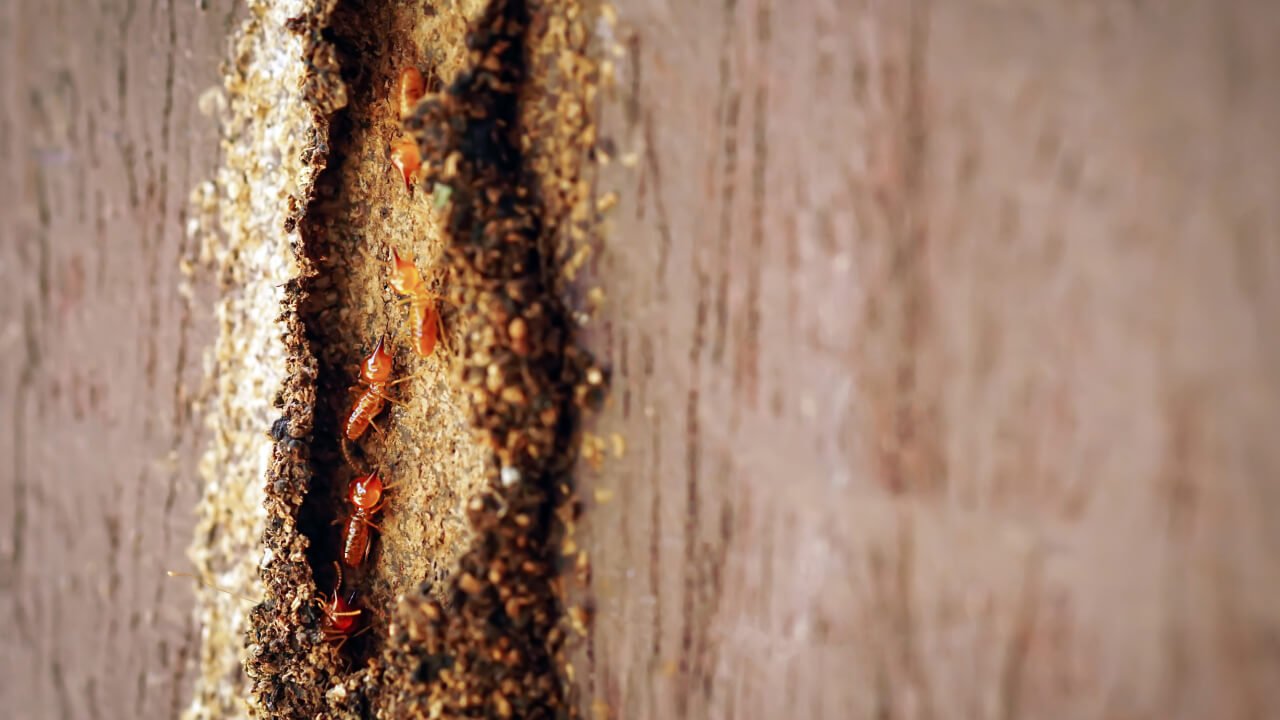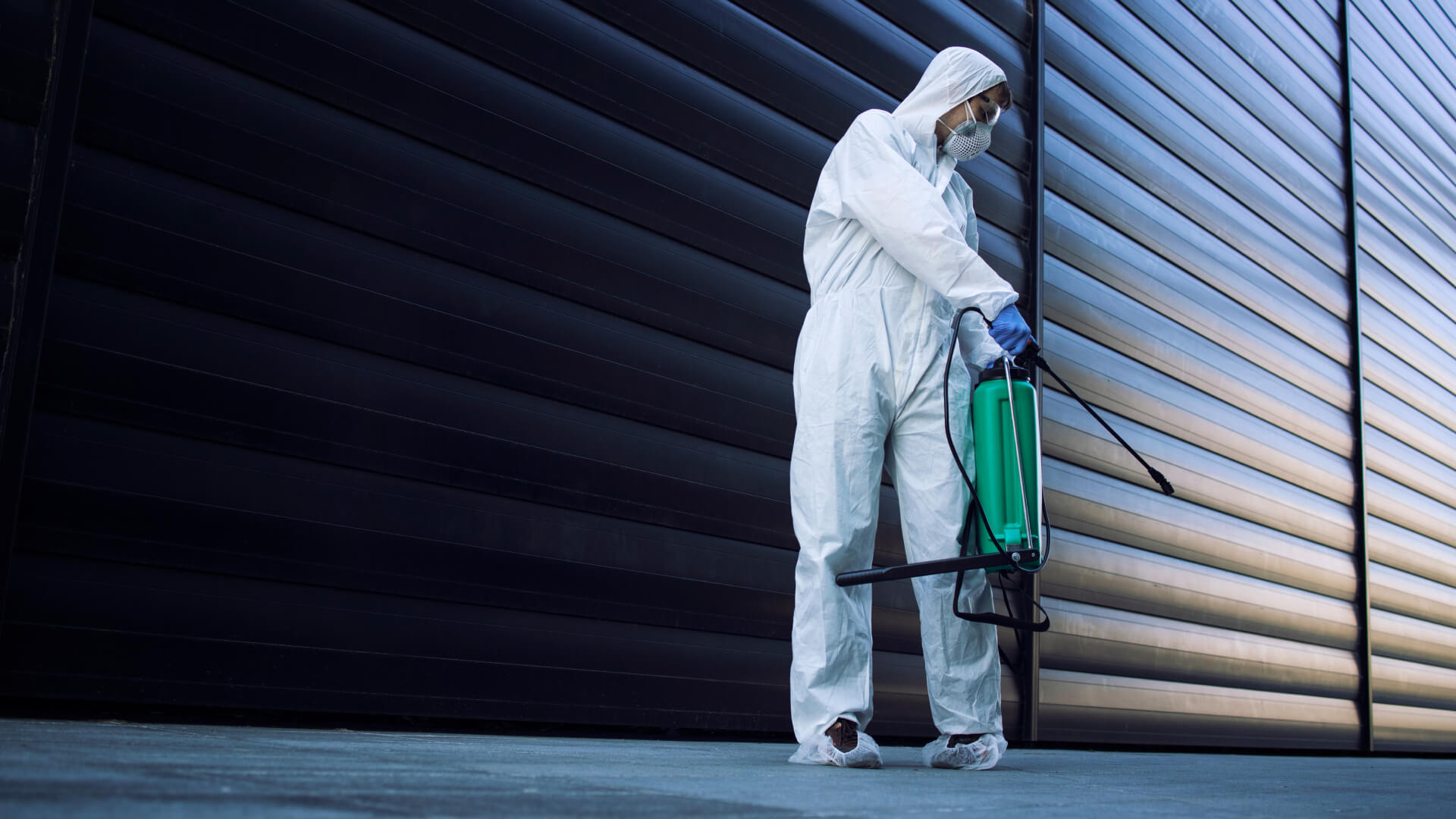10 Prevention Tips for Subterranean Termites

Subterranean termites are known for their ability to silently infiltrate your home or building, leaving you with unexpected and costly damage.
However, there are some things you can do to protect your property from these destructive insects.
In this article, we’ll explore some techniques to help you termite-proof your home and make it easier to spot any problems early on.
By following these tips, you can keep your home safe from these pests and ensure that it remains a termite-free sanctuary.
1. Improve Your Storage Practices
Well-organized storage practices play a crucial role in termite prevention. Subterranean termites feed on cellulose-containing materials such as timber, cardboard, and paper. To deter them from finding easy sources of food and shelter, consider the following guidelines:
- Clear Subfloor and Exterior Areas: Ensure that all areas beneath your property and around its perimeter remain free of stored items. It’s essential to provide clear access for inspections, avoiding any bridges, breaches, or disturbances in these areas.
- Subfloor Storage: When storing items in subfloor areas, be vigilant about not inadvertently offering termites accessible food, concealed entry points, or compromising ventilation. Your stored items should not inadvertently facilitate termite activity.
2. Eliminate Timber Debris
Timber offcuts and other wood-based debris in subfloor and perimeter areas of a structure attract subterranean termites.
They serve as both a food source and a nesting ground for these pests. To reduce this risk, eliminate timber debris, offcuts, and any wood materials from subfloor and exterior areas as soon as possible.
This will reduce the chances of attracting subterranean termites to your property.
3. Enhance Ventilation
Proper ventilation in subfloor areas is crucial for maintaining optimal humidity levels and creating a termite-unfriendly environment.
High humidity and excess moisture create conditions in which wood decay fungi and subterranean termites thrive.
You can mitigate this issue by ensuring adequate airflow in your subfloor areas using natural or artificial means.
Strong airflow can help reduce temperature and humidity, promoting the evaporation of soil moisture.
To maximise the effectiveness of ventilation, avoid creating eddies or stagnant points in your subfloor space.
4. Manage Moisture Sources
Excess moisture is a primary factor that attracts subterranean termites close to or within structures, especially in drier regions. Controlling moisture sources is crucial to preventing termite infestations.
Pay attention to the following areas:
- Roof and Surface Drainage: Inspect and maintain roof drainage systems to prevent leaks and ensure adequate downpipe functionality. Ensure that surface drainage slopes away from your walls, keeping garden beds and wind-blown soil from creating stagnant water.
- Plumbing Maintenance: Address any plumbing issues, such as leaks, unsealed tap flanges, damaged pipes, or blocked drains, as these can contribute to moisture buildup around your property. Pay special attention to faulty connections and ensure that air conditioners and hot water systems drain properly.
- Garden and Lawn Irrigation: If you have a garden or lawn irrigation system, ensure it does not leak or oversaturate the soil. Leaking garden irrigation systems can create moist conditions that are favorable for termite activity.
5. Manage Vegetation and Gardens
Landscaping and garden management play a crucial role in termite prevention.
Ensure that the vegetation around your foundation areas does not obstruct inspection zones or airflow.
Follow these guidelines:
- Tree Planting: Avoid planting trees close to buildings to limit root intrusion, which can create bridges for termites. Maintain a minimum clearance of 300mm between trees and the structure or install root barriers 300mm away from the foundation to prevent termite access.
- Garden Beds: Be cautious when using garden coverings like pine bark, wood chips, or materials containing cellulose, as these create a termite-friendly environment. Keep these coverings at least 300mm away from the base of external walls or any building element in contact with the main structure. Do not place garden beds against the building’s perimeter.
- Maintenance: Regularly maintain vegetation to prevent it from obstructing weep holes and ventilation. Ensure that soil levels remain at least 75mm below weep holes. If soil adjacent to a building treated with termiticide is disturbed, repair it immediately.
6. Choose Termite-Resistant Materials
The construction of structures such as fences, retaining walls, and pergolas can either attract or deter subterranean termites. Follow these guidelines to minimize termite risk:
- Termite-Resistant Materials: Build structures using termite-resistant components, especially if they come into contact with the ground. Using termite-resistant materials reduces the risk of termite infestation.
- Attachments to Buildings: Ensure that any attachments to your building, such as downpipes, service pipes, fence posts, air conditioning units, hot water systems, and rainwater tanks, have a nominal gap of at least 50mm at the ground contact point. This gap allows for clear and uninterrupted visual inspection. For timber posts, fence palings, house battens, etc., that are in ground contact, maintain a minimum 50mm gap for clear inspection or install an effective termite management system when practical.
7. Prevent Disturbance to Treated Soil
If your property has undergone termiticide soil treatment, it’s crucial to prevent any disturbance to the treated areas, as this can break the treatment barrier and allow subterranean termites to infiltrate.
Common causes of disturbance include tilling soil, pets and children excavating soil, water runoff causing erosion, and installing paving or concrete paths. In the event of a suspected breach to the treated area, promptly investigate and address any suspected breaches of the treated area.
8. Adjust Soil Levels
Keep an eye on soil levels around your property. Elevated levels of paths, pavers, soil, or garden beds near or above your home’s flooring or subfloor level can create an inviting entry point for subterranean termites.
To mitigate this risk, consider rectification measures to ensure that soil levels do not provide a conducive environment for termite entry. Installing an effective termite management system may be practical in these areas, or increasing the frequency of inspections in these locations.
9. Remove Dead Trees and Stumps
Dead trees and stumps are highly attractive nesting sites for subterranean termites. To protect your property from potential infestations, remove dead trees and stumps from your property, as they pose an unnecessary risk to the structure.
If you suspect subterranean termite activity in these areas, treating them before removal is highly recommended. Keep in mind that treatment offers no protection against future termite infestations.
10. Seek Professional Advice
When contemplating new construction, landscaping, or drainage work, consult a termite expert company well in advance.
Seeking professional advice ensures that your termite management plan remains uncompromised and that appropriate preventative measures are in place.
Don’t wait until you’re facing an infestation to act; proactive planning can save you significant time and money.
Conclusion
Taking proactive steps to prevent subterranean termite infestations is essential for safeguarding your property.
By adhering to these guidelines and implementing the recommended strategies, you can reduce the risk of termite attacks and enhance the ease of inspection around your property.

Book Your Pre-Purchase Termite Inspection Today!
At Termite Choices, we're committed to providing effective and reliable termite solutions that safeguard your property year-round. Get in touch with us to schedule your annual termite inspection today.
Request A Quote